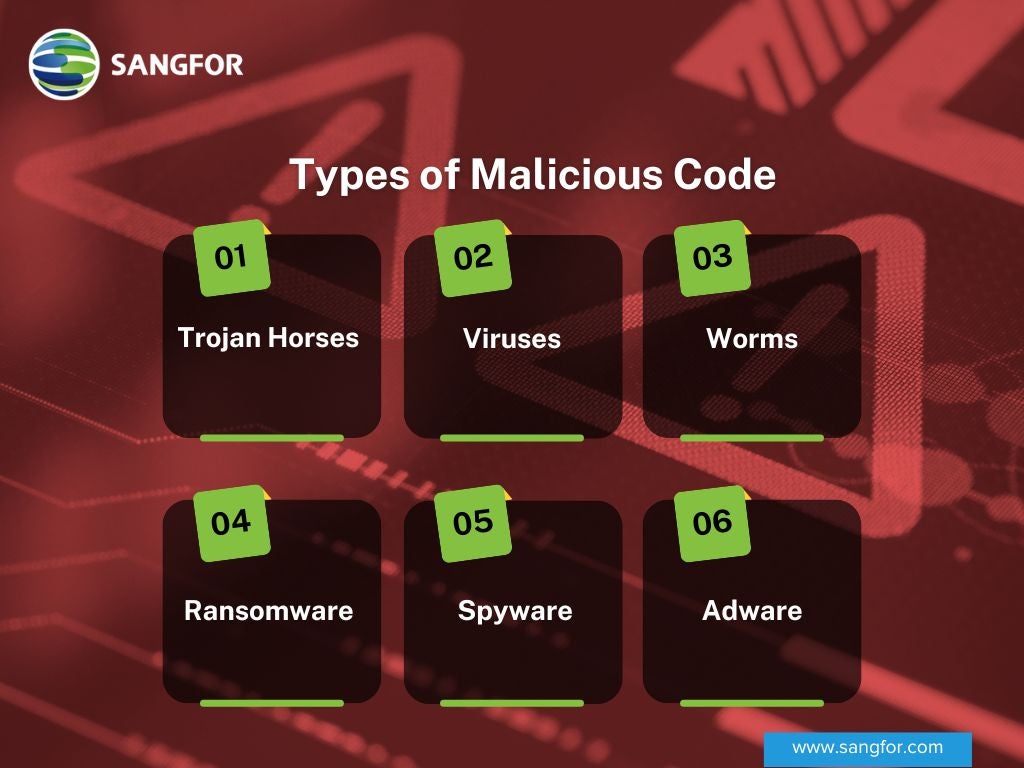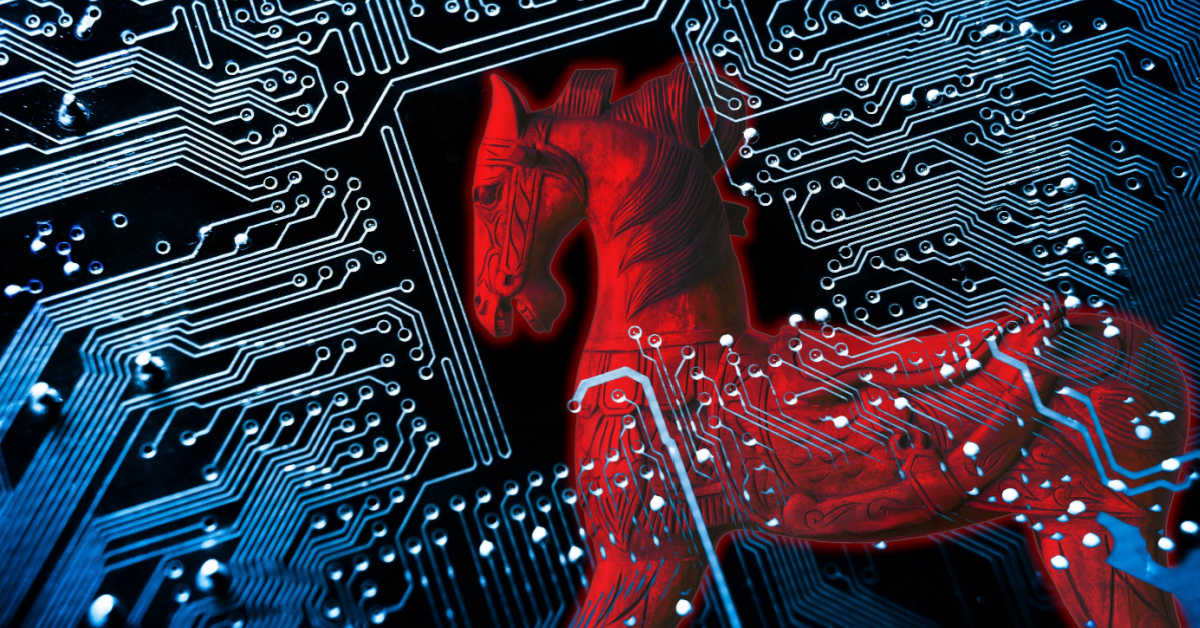It is essential to regularly evaluate the security of your organization. New cyber threats are more advanced and difficult to mitigate. Malicious code is an example of a threat that actively works to damage your computer and data. In this article, we'll discuss what malicious code is and how to protect yourself from it.
What Is Malicious Code?
Malicious code is any type of code that causes harm to a computer system or network. This includes viruses, worms, Trojan horses, ransomware, logic bomb, and other malicious programs.
Malicious code is the language used by threat actors to communicate with computers. This code is used to manipulate the computers and make changes, often leading to unauthorized access to a system. It then designs programming scripts – or “phrases” - to damage, alter, or breach the network to create or exploit system vulnerabilities. Malicious code is used to craft numerous forms of malware, which can steal data and gain unauthorized access to sensitive information, and is used to carry out multiple cyber-attacks. Unfortunately, these attacks are easier to carry out as the malicious code scripts can be re-used and automated. This allows widespread and faster cyber-attacks to take place.
The use of malicious code generally results in:
- Backdoors
- Corruption of Data
- Distributed Denial-Of-Service (DDoS)
- Security Breaches
- Information and Data Theft
- Identity Theft
- Ransom and Extortion
- Potential Damage to Files and Computing Systems

Malware can be tricky to detect in a computer system. Most malware can install itself, make copies, and initiate its payload function. It can then remove itself to avoid detection. Most malware is used as a form of spyware to steal information about the user.
Types of Malicious Code
Malicious code comes in a variety of forms. We’ve drafted up a summary of just a few key types of malicious code:

Trojan Horses
The story of the wooden horse used by the Greeks to deceive the Trojans is famous. This story inspired the use of a Trojan Horse as a decoy file. It is used to carry malicious code. The Trojan Horse is a malicious program that masks itself as a legitimate one. It appears to do its expected duties while executing dangerous code in the background without the user's knowledge. This helps the threat to go undetected.
Trojans are generally classified according to the type of malicious actions they perform. Trojan Horses cannot reproduce or spread themselves. However, their malicious elements may include viruses, worms, or other damaging code.

Viruses
Viruses are malicious software that copies itself and spreads to other computers. Its malicious code attaches to macro-enabled programs. Computer viruses come in different forms and include Polymorphic, Compression, Macro, Boot sector, Multipart, and Stealth viruses. A virus cannot, however, spread automatically and requires a carrier. This means that it travels through USB connections or downloaded files from the internet. Once a virus infiltrates your device, it can then self-propagate and spread through the system and connected networks.
Worms
Worms are malicious software that can spread itself without attaching to a program. The self-replicating code is like viruses but more infectious. It often uses security flaws in a computer network to spread. Malware of this form is considered more dangerous due to the malicious code it carries. It can cause bandwidth degradation or denial of service through aggressive self-propagation.
A type of malware known as a worm is the Stuxnet computer worm. It was created by US and Israeli intelligence to sabotage a vital component of Iran's nuclear program. This worm exploited multiple previously unknown Windows zero-days and disabled critical infrastructure. Stuxnet was designed to destroy the centrifuges that Iran was using to enrich uranium as part of its nuclear program. The worm has not been used since but its source code has been used to create similar highly targeted cyber-attacks.
Ransomware
Ransomware is a type of malicious software that encrypts the victim's files. The attacker then demands a ransom from the victim to restore access to the data upon payment. Users are shown instructions on how to pay a fee to get the decryption key. The costs can range from a few hundred dollars to thousands, payable to cybercriminals in Bitcoin. Ransomware attacks can cause significant disruption to individuals and organizations, leading to data loss and financial damage.
Spyware
Spyware is malicious software designed to enter your computer device, gather data about you, and forward it to a third-party without your consent. Spyware can also refer to legitimate software that monitors your data for commercial purposes like advertising. However, malicious spyware is used explicitly to profit from stolen data. Spyware can steal sensitive information like login credentials, credit card details, and personal identification numbers (PINs) by tracking keystrokes, capturing screenshots, and recording other activities.
Adware
Adware is a type of malware that automatically delivers advertisements. Common examples of adware include pop-up ads on websites and advertisements that are displayed by software. Adware is often bundled with free software and can be installed without the user's knowledge. While not always malicious, adware can be intrusive and can sometimes come with spyware or other malicious programs. It can slow down your computer and lead to a poor user experience.
How to Avoid Malicious Code Attack
To avoid malicious code, you have to adopt specific practices and use tools that elevate your cybersecurity posture. Here are some ways to protect yourself from malicious code:
Practicing Good Cybersecurity Habits
It is important to ensure that you and every person in your organization make use of adequate cyber hygiene practices. These are a basic set of exercises that will improve and maintain perfect cyber health. Good cyber habits start with taking precautions online with sensitive information. They also include regularly updating security software on PCs. According to Malwarebytes’ 2020 State Of Malware Report, the amount of malware on Macs is outpacing PCs for the first time.
The ISACA found that 56% of professionals believe their organization's cybersecurity team is understaffed in its 2023 State of Cybersecurity Report. Understaffing is an issue facing many organizations, such as businesses and government. This could put a strain on existing staff. It could also lead to an increased risk from malware threats. This is why it’s important to implement better cyber hygiene habits across your business to improve your malicious code protection.
Using Antivirus Software
Antivirus software is designed to scan, identify, and eliminate viruses from a computer. The software works to protect your computer from threats and keep your network, private and sensitive data, and business information secure. However, not all antivirus software protection can treat certain infections or actions caused by malicious code. It’s important to invest in the right services and tools to maintain peak security.
Using Sangfor to protect against malicious code
Sangfor offers top-notch cybersecurity solutions. These solutions protect your company from malicious code and Social Engineering Attacks. They ensure your network is secure.
- Sangfor Endpoint Secure technology offers comprehensive protection against malware and APT attacks across an organization's entire network. It is easy to manage, operate, and maintain. The platform also received the AV-TEST “Top Product” award for achieving 100% ransomware protection against zero-day malware.
- Sangfor's Cyber Command (NDR) Platform monitors for malware, residual security events, and potential compromises. It is combined with Threat Intelligence technology and an AI algorithm. This helps to keep you informed of any vulnerabilities or threats detected in the system.
Final Thoughts on Malicious Code
Malicious code is an unfortunate side-effect of our advancing technological era. This is why it’s important to always employ the best cybersecurity to keep your organization safe. Being aware of the issue is only half the solution. You are responsible for improving cyber awareness. Utilize enhanced tools and platforms to effectively protect against malicious code. For more information on Sangfor’s cyber security and cloud computing solutions, visit www.sangfor.com.
Malicious Code FAQs
Technically, yes, an AI program can write out malicious code. The recent interest and advances in AI technology have sparked debate on the safety of machine intelligence.
The fact that ChatGPT has been used to craft malware has also made headlines. Safeguards are constantly being improved to prevent AI from creating malicious code. This ensures that the possibility is avoided.
While detecting malicious code in source code can be challenging, it is not impossible. Several methods and tools can be used to identify potential security vulnerabilities and malicious patterns in source code.
These include code scanning tools, manual code reviews, code signing, integrity checks, and both static and dynamic code analysis.
It is essential to understand that JavaScript itself is not negative. However, it can be misused by people with malicious intent. Some examples of malicious JavaScript include:
- Cryptojacking – this is the hijacking of a computer’s resources to mine cryptocurrencies. JavaScript is often used to run mining scripts in the victim's browser and exploit its system's processing power.
- Drive-By Downloads - JavaScript is used here to automatically download and execute malware onto the victim's computer without their consent or knowledge. The malware could be a virus, ransomware, or any other type of malicious software.
- Cross-Site Scripting (XSS) Attacks – These involve injecting malicious JavaScript code into a trusted website which is then executed by the victim's browser when they visit the compromised page. The code can be used to steal sensitive information or to perform other malicious actions.
- Web-Based Keyloggers - Malicious JavaScript can be used to capture user keystrokes on web forms and send them to an attacker-controlled server. This technique is usually used to steal sensitive information.
Exploiting vulnerabilities is necessary to inject malicious scripts into a website. These vulnerabilities can be in the website's code, server configuration, or user inputs. Hackers may use several methods to achieve code injection, such as Cross-Site Scripting, SQL Injections, and File Upload Vulnerabilities. Remote File Inclusion, Server-Side Template Injection, and Content Management System Vulnerabilities are other potential strategies.
Web developers and administrators have to follow secure coding practices to ensure that websites are not compromised by malicious code.
Protecting your organization from malicious code means using advanced cybersecurity and IT infrastructure that comes integrated with safety protocols. Here are a few rules for organizations to follow to avoid malicious code:
- Installing anti-scripting software to prevent unauthorized JavaScript and related code from running.
- Activating popup blockers.
- Not using admin-level accounts for daily use to avoid scripts from automatically running.
- Being extra cautious when opening links or attachments.
- Using data backups to protect your data.
- Avoiding public Wi-Fi connections.





